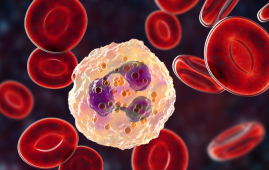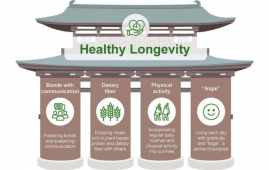

How New Data Is Reframing Malaria Prevention Efforts in Africa
Malaria prevention remains one of Africa’s most urgent public health priorities, especially for women, young children, and underserved communities. A newly paraphrased analysis highlights how African biostatisticians are generating causal evidence, not assumptions, to determine whether malaria messaging truly increases the use of insecticide-treated nets (ITNs). This shift marks a major milestone in evidence-driven decision-making across high-burden regions.
Explore All Public Health CME/CE Conferences and Online Courses
What the Latest Biostatistics Research Reveals
Edson Mwebesa, a Fellow at the Sub-Saharan Africa Advanced Consortium for Biostatistics (SSACAB), applied Propensity Score Matching (PSM) to Uganda’s 2018–19 Malaria Indicator Survey. His objective was to measure, rather than infer, whether exposure to malaria prevention messages influences protective behavior among women of reproductive age and caregivers of children under five.
Baseline data showed that 37.6% of women and 37.9% of caregivers had received malaria messaging within the previous six months. ITN usage, although higher, fell short of universal protection, with 69.3% of women and 71.8% of children reporting that they slept under an ITN the night before the survey.
By matching women with similar socioeconomic and demographic characteristics, PSM isolated the effect of messaging itself. Results demonstrated measurable impact:
- Women exposed to malaria messaging were 5.1% more likely to use an ITN.
- Caregivers’ exposure increased ITN usage among children by 4.3%.
These differences translate to tens of thousands of additional protected households nationwide, reducing both clinical and financial malaria burdens.
Why This Matters for Policymakers and HCPs
The findings reinforce the value of targeted communication, especially through high-reach channels. Radio emerged as the primary source of messaging, followed by community health workers and interpersonal communication initiatives, while digital platforms remained underutilized. For public health professionals, nurses, and policymakers, this causal evidence provides a clear direction for resource allocation.
Professor Tobias Chirwa of the Wits School of Public Health notes that this is the result of strengthened African data systems and growing local analytical capacity. As Africa observes African Statistics Day, these insights demonstrate how home-grown biostatistics can guide more equitable and effective malaria prevention strategies.
Strengthening Communication to Improve Malaria Prevention
As malaria continues to affect households, healthcare systems, and economies, this research underscores the importance of well-designed, evidence-based communication campaigns. The emergence of robust causal methods, led by African experts, marks a transformative step in malaria prevention and public health planning.
Source:
more recommended stories
 Circadian Control of Neutrophils in Myocardial Infarction
Circadian Control of Neutrophils in Myocardial InfarctionKey Takeaways for HCPs Neutrophil activity.
 E-Cigarette Use and Heart Attack Risk in Former Smokers
E-Cigarette Use and Heart Attack Risk in Former SmokersKey Takeaways for Clinicians and Nurses.
 Ultramarathon Physiology: What HCPs Should Know?
Ultramarathon Physiology: What HCPs Should Know?Ultramarathon Metabolism: What Happens to the.
 High-Intensity Training and Oxidative Stress Insights
High-Intensity Training and Oxidative Stress InsightsNew Evidence Linking High-Intensity Training and.
 Sterilized Fermented Beverage for Obesity: New Evidence
Sterilized Fermented Beverage for Obesity: New EvidenceEarly Insights Into a Sterilized Fermented.
 Cardiovascular Risk and Sudden Cardiac Death in Diabetes
Cardiovascular Risk and Sudden Cardiac Death in DiabetesRising Sudden Cardiac Death (SCD) Risk.
 Perinatal Mental Health Challenges Highlighted in New Study
Perinatal Mental Health Challenges Highlighted in New StudyMental Health Challenges in New Parents:.
 Walking Speed Before Hip Replacement Predicts Recovery
Walking Speed Before Hip Replacement Predicts RecoveryNew Evidence Points to a Simple,.
 How Soybean Oil Impacts Weight Gain and Metabolism
How Soybean Oil Impacts Weight Gain and MetabolismWhy Soybean Oil May Affect Metabolism.
 World Summit Outlines Core Principles for Healthy Longevity
World Summit Outlines Core Principles for Healthy LongevityWhy Healthy Longevity Demands a New.

Leave a Comment